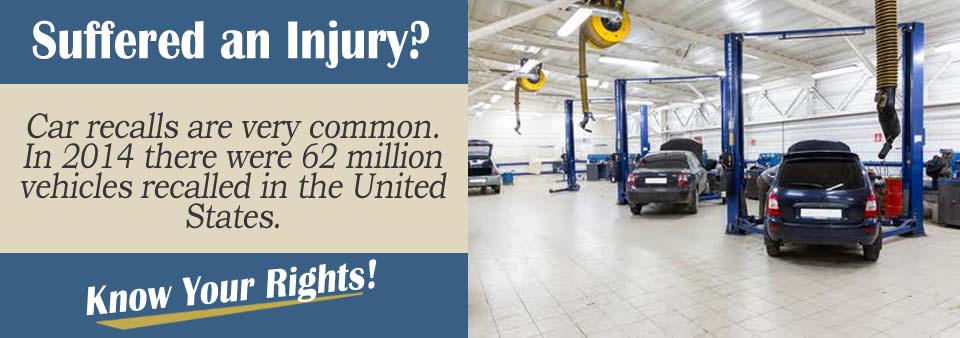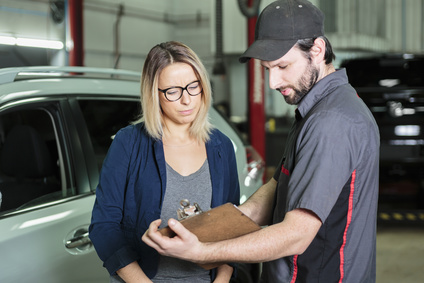If it has been determined that your vehicle doesn't comply with some kind of federal safety standard or it has a defect that is related to safety, it might be recalled. Auto recalls happen when the National Highway Traffic Safety Administration (NHTSA) or an auto manufacturer find a problem that interferes with vehicle safety.
When a recall is issued, owners of the particular vehicle being recalled are notified and told what needs to be done. Usually, this means to contact the auto service center at a dealership and get the repairs needed to address the problem done free of charge.
If safety issues aren't addressed, the NHTSA can fine auto manufacturers significant amounts and issue recalls, but an auto manufacturer can issue a recall on their own before being instructed to do so by the NHTSA if they believe a problem exists that could be hazardous.
Don't Panic
Getting a recall for a safety issue with a car is no reason for anyone to panic. The recall notice explains any potential risks that the vehicle owners and operators could encounter because of the problem. The reader needs to carefully go over the notice and understand that the recall is usually a precautionary measure.
It doesn't mean that the vehicle is going to experience the worst possible problems that could result from the alleged safety problem. Usually, only a handful of cars out of tens of thousands actually show signs of the defect.
All cars included in the recall might not have faulty parts, but since some do there is no way for the manufacturer to specifically pin-point those with problems so numerous cars are recalled because it is better to be on the side of safety. If you learn about a recall and believe your car might be included but you don't receive a recall notice, you should visit safecar.gov to see if your car is impacted by the recall in question.
The recall notice reader will find a description of the defect, the risk or hazards that are possible because of the problem, any warning signs, how the problem is to be fixed, and instructions on how to proceed with addressing the recall. You will need your car's VIN number when visiting the site so you can determine if it is included in the recall.

Determining Who Pays for the Recall
If your car has been recalled, it is only normal to wonder if you have to pay for the needed repairs. If it has only been 8 years since the vehicle was purchased new, the manufacturer will cover the costs of the repairs associated with the recall. However, if the vehicle is 8 years old or older, you will usually have to pay to repair the problems.
If your car is on the recall list, you need to go to an authorized dealer for repairs. The manufacturer contracts with the authorized dealers, so that is why the recall must be taken care of there. If you received a recall notice, you should take the notice along to the dealership for your scheduled appointment.
If the dealership tries to charge you to repair a recall that should be covered by the manufacturer, speak to a service department manager. If problems persist after speaking to a service manager, you should call the manufacturer directly at the number on the recall notice. If problems continue, you can call the NHTSA since it is a government entity.
Scheduling an Appointment
After you have gotten the recall notice, you need to call a dealership to schedule a service appointment. Explain you received the recall notice and provide them with the information that they need, such as your car's VIN number and any certification numbers that might be included on the recall notice.
They will have to order the proper parts to fix the problem. Each recall has a specific procedure that must be followed to address the problem. The dealership that handles the repairs will input the information into the system to show the recall was addressed. That way, any future look-up of your car VIN will show that the recall was addressed and which dealership fixed the problem and on what date.
The service department will also make sure any recalled parts are properly inspected and returned to the manufacturer if necessary. This not only fixes the problem but also helps prevent similar issues from happening in the future.

Be Safe
After the recall has been repaired, the problem should be alleviated. This means that if you see additional problems or the issue continues after the repair has been made, you should contact the dealership that fixed the problem so they can recheck it.
If that doesn't alleviate the issue, call the manufacturer and make them aware of any continuing problems and concerns that you have regarding the recall.
If you aren't satisfied with the action taken by the dealership and the manufacturer, contact the NHTSA and let them know that the recall repairs are not fixing the problem and what kind of issues have persisted with your vehicle after the fix was supposedly done. Recalls are designed to improve safety. If safety problems persist, the recall is not serving it's purpose.
Conclusion
Recalls are very common. As an example, during 2014 there were 62 million vehicles recalled in the United States. In the average year, about 15 to 16 million cars are sold in the U.S., so in that one year alone about four years worth of car sales were recalled.
While the NHTSA does initiate some recalls, many of the recalls are being initiated by the automakers themselves who are addressing safety concerns earlier. The recalls have actually made cars safer, and by 2013 traffic deaths have dropped by as much as 25% during the last decade.
So if you have a recall notice show up in the mailbox, you should be glad that the auto manufacturers and NHTSA are being proactive in tackling automotive safety issues.